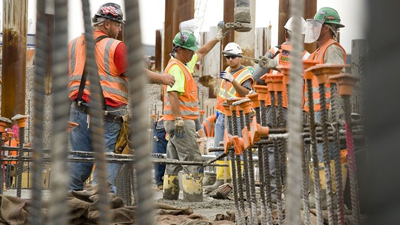AGC's Data DIGest: April 3-9, 2015
Construction employment dips in March but wages move up; reports vary on cost trends
 Editor’s note: Construction Citizen is proud to partner with AGC America to bring you AGC Chief Economist Ken Simonson's Data DIGest. Check back each week to get Ken's expert analysis of what's happening in our industry.
Editor’s note: Construction Citizen is proud to partner with AGC America to bring you AGC Chief Economist Ken Simonson's Data DIGest. Check back each week to get Ken's expert analysis of what's happening in our industry.
Click here to register for a free 4/30 webcast "Will Construction Pick Up the Pace or the Pieces?" presented by AGC/AIA/CMD.
Nonfarm payroll employment increased by 126,000 in March, seasonally adjusted, and by 3,128,000 (2.3%) over 12 months, the Bureau of Labor Statistics (BLS) reported on Friday. Construction employment dipped by 1,000 for the month but increased by 282,000 (4.7%) over the year to 6,344,000. Residential construction employment (residential building and specialty trade contractors) dropped by 2,800 for the month but rose 136,300 (6.0%) over 12 months. Nonresidential employment (building, specialty trades, and heavy and civil engineering construction) increased by 1,100 in March and 145,000 (3.8%) year-over-year. [node:read-more:link]


 Editor’s note: Construction Citizen is proud to partner with
Editor’s note: Construction Citizen is proud to partner with  Editor’s note: Construction Citizen is proud to partner with
Editor’s note: Construction Citizen is proud to partner with  Editor’s note: Construction Citizen is proud to partner with
Editor’s note: Construction Citizen is proud to partner with 
 Editor’s note: Construction Citizen is proud to partner with
Editor’s note: Construction Citizen is proud to partner with  Editor’s note: Construction Citizen is proud to partner with
Editor’s note: Construction Citizen is proud to partner with  Editor’s note: Construction Citizen is proud to partner with
Editor’s note: Construction Citizen is proud to partner with  Construction employment rises nationally in January and in most metros in December
Construction employment rises nationally in January and in most metros in December Editor’s note: Construction Citizen is proud to partner with
Editor’s note: Construction Citizen is proud to partner with 